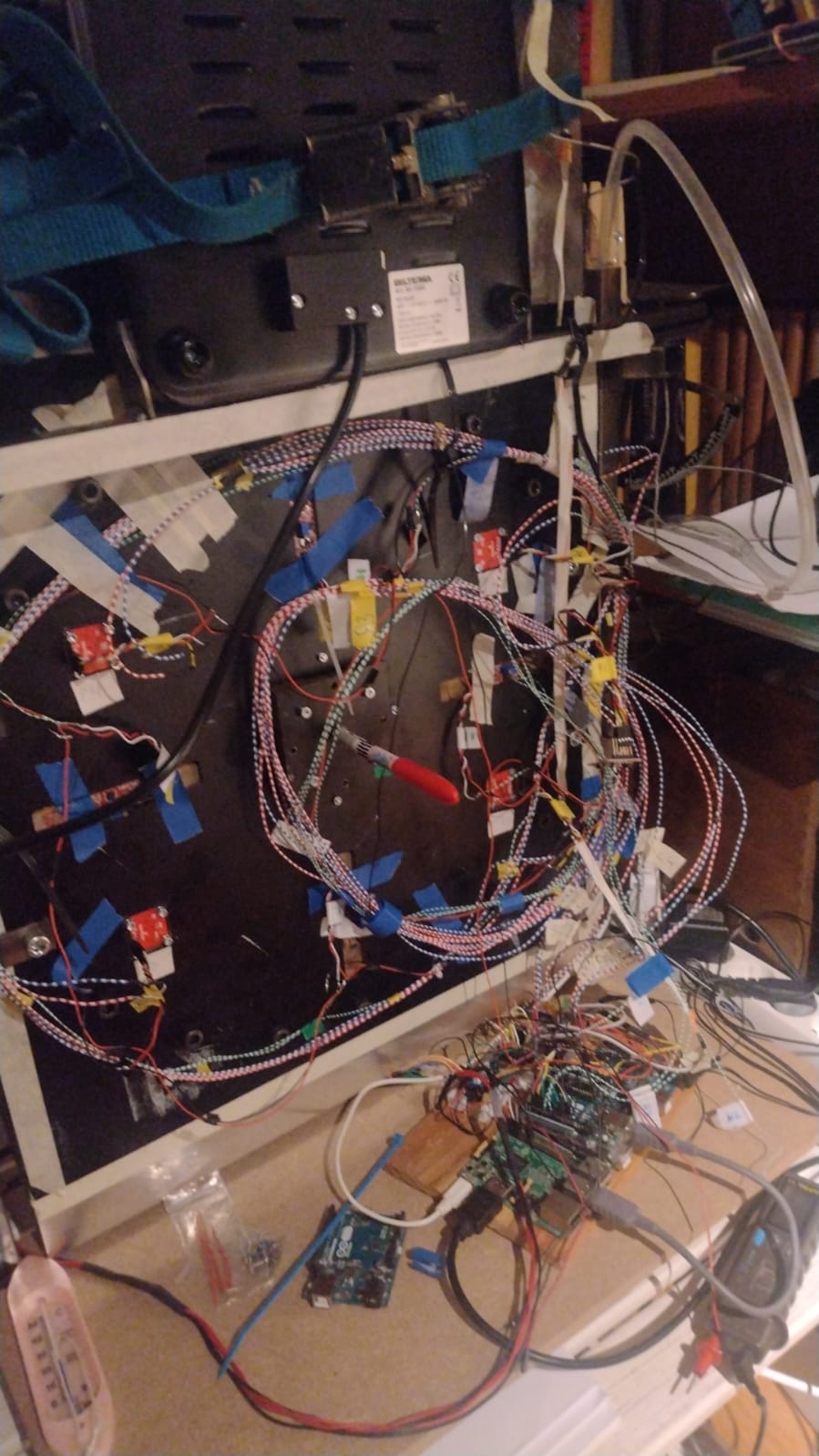
















Li.U Lab Model 3 Heat and Pressure Test
Succesful Heat And Pressure Test Of The Updated Lab Model V3 From The Three
GREC Sustainable Groups Joint Project at Linköping University
Background
Three
candidate groups at Linköping University built a GREC Lab Model
version 3. They did not perform any succesful test before completing their
term. After their project presentation the GREC was reassembled with tight
gaskets and made ready for empirical tests relating theory to reality.
The first revolving heat and pressure test of the Lab Model v3 was conducted
on July 17, 2023 by nilsinside AB in Motala, Sweden.
 The Green Revolution Energy Converter (GREC) Lab Model V3 with
electrical heating strapped on top. A marker pen was used as a plug
The Green Revolution Energy Converter (GREC) Lab Model V3 with
electrical heating strapped on top. A marker pen was used as a plug
covering the hole for the moving boundary (piston, membrane or linear
generator) in the centre. Four red pressure sensors are in connection with
the total volume inside the Lab Model seen in positions
North-East (Column blue in diagram), South-East (red in diagram), South-West (yellow)
and North-West (green)
The test was conducted with the Mechatronics group software "Kombinerad_kod.ino"
resulting in a Work Generating Volume (WGV) revolution at about 1 Hz (60 RPM).
A higher revolution speed was expected but it seems like the sampling rate
interfered with the stepper motor control.
The software recorded 5 pressure sensors simultaneously. Four of the sensors
were connected to different positions of the LabModel total volume as
described in the image above and a fifth sensor recorded the ambient pressure
outside the closed system. A temperature difference ΔT of 55°C between the
two heat conducting sides with 20°C at the bottom and 75°C at the top. As in
the earlier test without heat gradient the four graphs follow each other so close
that they almost overlap.
 The Green Revolution Energy Converter (GREC) Lab Model V3 heat and pressure test diagram showing overlapping graphs
The Green Revolution Energy Converter (GREC) Lab Model V3 heat and pressure test diagram showing overlapping graphs
Ambient temperature: 20°C (293K)
Cold side temperature: 20°C (293K)
Warm side temperature: 75°C (348K)
Temperature Gradient, ΔT = 55°C (55K)
Ambient pressure: 99 940 Pa
Maximum pressure in this test, P max: 100 751 Pa
Minimum pressure in this test, P min: 99 490 Pa
Pressure difference average in this test, ΔP = 1 249 Pa
Revolutios at approximately 1Hz (60RPM)
Notes:
• We suspect a small leak in the GREC. Hopefully the leak disappears when
we tightly cover the shaft passage areas.
• Sampling rate and revolving speed depends on I2C bus, software and the Arduino processor frequency.
As expected the graphs still overlaps. The pressure in the WGV as well as
in the "dead volume" is the same as in the total Lab Model V3 volume. It
might be that the graphs separate at faster revolving speed
The Technology
In thermodynamic terms the GREC is a closed system with a moving boundary
where the GREC converts heat energy to kinetic energy. The GREC heats and
cools its internal large sliced Work Generating Volume (WGV) efficiently,
rapidly and repetitively, resulting in internal pressure changes that
generate volume change work.
You may think of the GREC as a revolving Carnot heat engine controlled by
computer logics. Please find the theoretical presentation of
the GREC on this link:
GREC Theory Presentation
The GREC is a new technical solution to tackle climate change
and luckily there are technologist groups at Linköping University with the
challenge of transitioning to fossil-free energy systems. They have contributed
to several GREC climate-positive research projects over time.
Please feel free to call or email:
Contact information at nilsinside AB
Nils Karlberg nils@nilsinside.com, tel +33 608 53 15 93, theory & technical questions
Sophia Karlberg sophia@nilsinside.com , strategy & admin questions
The GREC Project



































